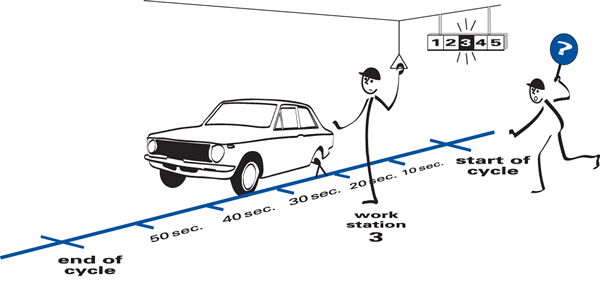Fixed-Position Stop System
A method of addressing problems on assembly lines by stopping the line at the end of the work cycle—that is, at a fixed position—if a problem is detected that cannot be solved during the work cycle.
In the fixed-position stop system, an operator discovering a problem with parts, tools, materials supply, safety conditions, etc., pulls a rope or pushes a button to signal the supervisor. The supervisor assesses the situation and determines if the problem can be fixed before the end of the current work cycle. If the problem can be fixed, the supervisor resets the signal system so the line doesn’t stop. If the problem can’t be corrected within the remainder of the cycle time, the line stops at the end of the work cycle.
The fixed-position stop system was pioneered by Toyota to solve three problems: (1) The reluctance of production associates to pull the signal cord if the entire line would be stopped immediately; (2) unnecessary line stoppages to deal with minor problems that could be resolved within one work cycle; and (3) the need to stop the line at the end of a work cycle rather than mid-way through the cycle to avoid the confusion—plus the quality and safety problems—inherent in restarting work tasks part of the way through a cycle.
The fixed-position stop system is a method of jidoka, or building in quality, on manual processes along moving assembly lines.
